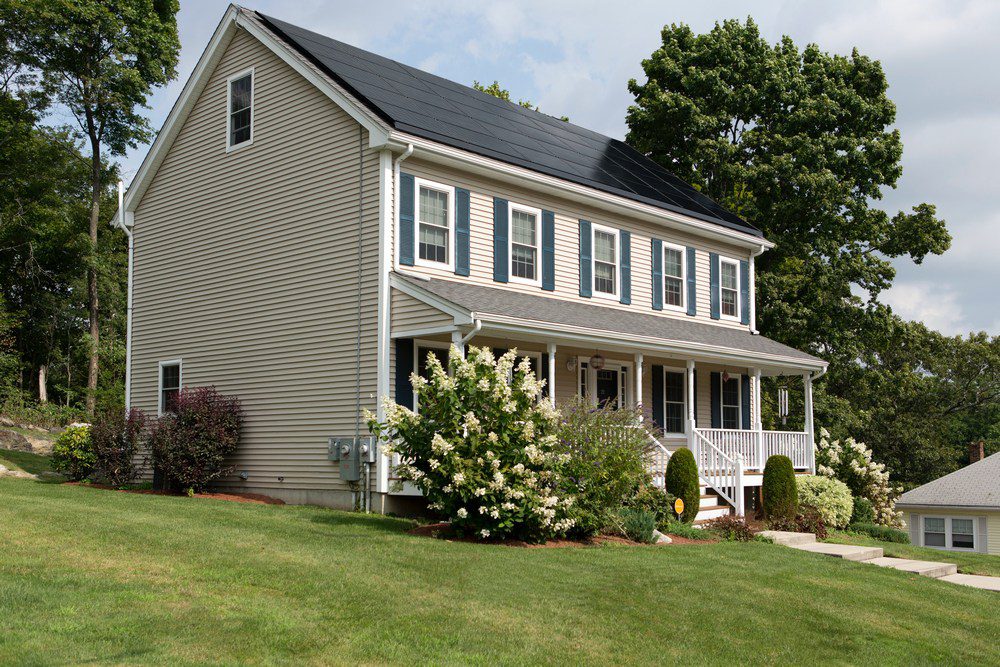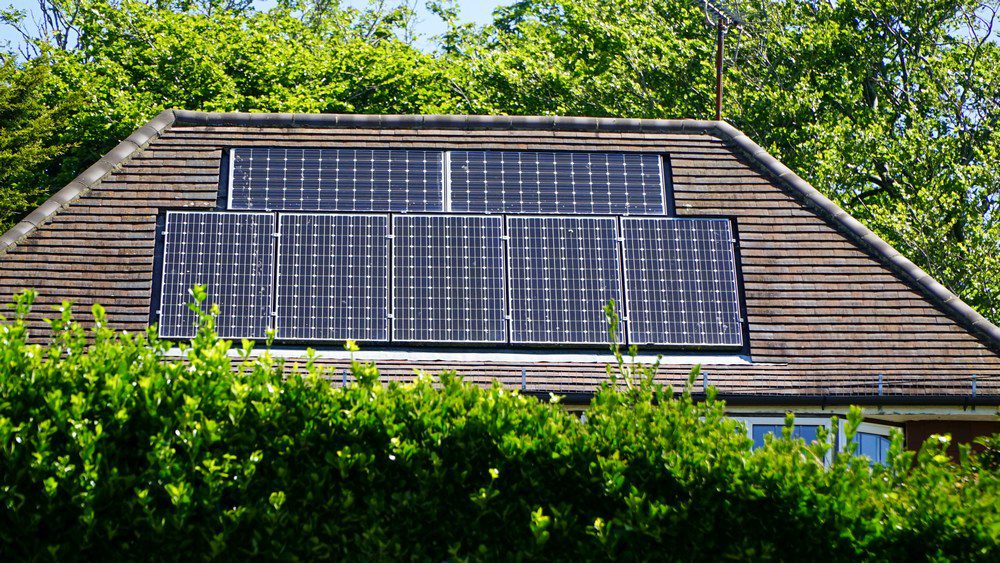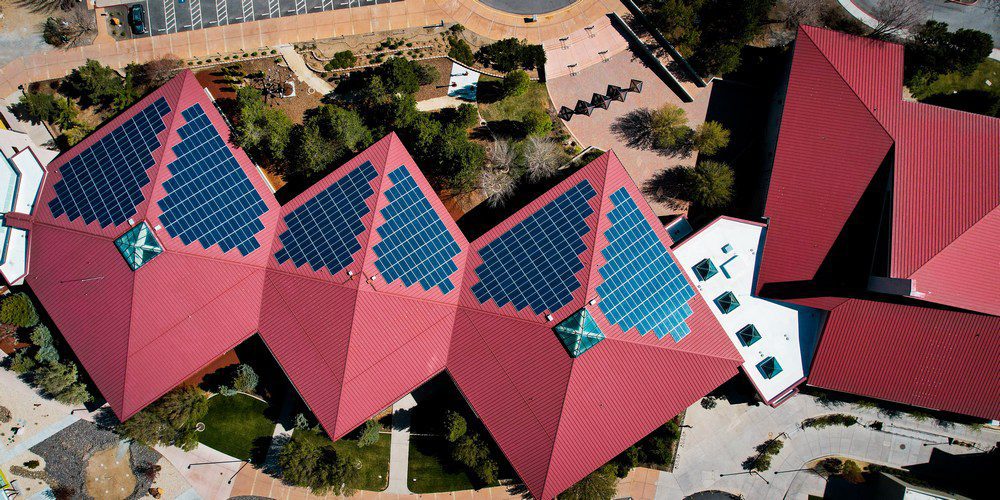Last Updated on May 1, 2025 by teamobn
Solar energy is steadily gaining traction as an alternative to fossil fuels due to its environmental benefits, cost savings, and government incentives. While many homeowners are eager to embrace this sustainable energy source, some may be concerned about the impact of solar panel installation on the aesthetics of their homes.
This article explores various design considerations and innovative solutions that can help integrate solar panels seamlessly into a home’s architecture, maintaining both functionality and visual appeal.
Contents
- 1 Aesthetic Challenges of Solar Panel Installation
- 1.1 Solar Panel Design Options
- 1.2 Strategic Panel Placement
- 1.3 Landscaping and Architectural Elements
- 1.4 Custom Solar Panel Shapes and Sizes
- 1.5 Solar Façades and Building-Integrated Photovoltaics (BIPV)
- 1.6 Working with Architects and Solar Design Professionals
- 1.7 Embracing Solar Panels as a Design Feature
- 2 Bringing Solar to Your Home
Aesthetic Challenges of Solar Panel Installation
The most common concern regarding solar panel installation is its impact on the appearance of a home’s exterior. Traditional solar panels, with their bulky frames and dark, reflective surfaces, can often clash with the architectural style and color palette of a residence.
Additionally, the size and placement of panels might be dictated by the need to maximize solar exposure, potentially leading to awkward or unattractive installations. Fortunately, advances in solar technology and design have led to a variety of aesthetic solutions that can address these concerns.
Solar Panel Design Options
In recent years, solar panel manufacturers have begun offering a wider range of design options to cater to homeowners’ aesthetic preferences. These include:
Frameless Solar Panels
By eliminating the bulky aluminum frames, frameless solar panels offer a sleeker, more streamlined look. These panels are held together by a transparent back sheet and can be installed with low-profile mounting systems to further enhance their visual appeal.
Colored Solar Panels
Some manufacturers now offer solar panels in various colors, allowing homeowners to choose panels that better match their roofs or building exteriors.
Solar Shingles
Solar shingles are a newer innovation that can replace traditional roofing materials. These shingles, which can blend seamlessly with conventional roofing materials, contain photovoltaic cells that generate electricity when exposed to sunlight.
Strategic Panel Placement
Solar panel placement is crucial to both energy production and aesthetic appeal. To maintain a harmonious visual balance, homeowners can consider the following strategies:
Roof-Mounted Solar Panels
Installing solar panels on the rear or least-visible portion of a roof can help minimize their visual impact. A professional solar installer can help assess the optimal placement to maximize solar exposure without compromising aesthetics.
Ground-Mounted Solar Panels
For homes with ample outdoor space, ground-mounted solar panel installations can be an ideal solution. These installations can be positioned in a way that minimizes visibility while still capturing optimal sunlight.
Solar Carports and Pergolas
Solar carports and pergolas are excellent options for homeowners who wish to generate solar energy without mounting panels directly on their roofs. These structures can be designed to match the architectural style of the home and provide additional functional benefits, such as covered parking or outdoor living space.
Landscaping and Architectural Elements
Incorporating landscaping and architectural elements can help blend solar panel installations into a home’s overall design. Here are some ideas:
Green Roofs
Green roofs, which consist of vegetation planted over a waterproofing membrane, can be a visually appealing way to integrate solar panels into a home’s design. The vegetation can help conceal the edges of the solar panels while providing additional environmental benefits, such as improved insulation and stormwater management.
Trellises and Fences
Installing solar panels on trellises, fences, or other architectural features can help minimize their visual impact while still allowing for optimal solar exposure.
Landscaping
Strategic use of trees, shrubs, and other plantings can help screen ground-mounted solar panels or other solar installations from view while maintaining a harmonious, natural appearance.
Custom Solar Panel Shapes and Sizes
While most solar panels come in standard rectangular shapes and sizes, some manufacturers offer custom solutions that can be designed to fit unique architectural features or constraints. For example, triangular or trapezoidal solar panels can be used to accommodate irregular roof shapes or skylights.
These custom solutions can help maintain a cohesive visual appeal while maximizing solar energy production.
Solar Façades and Building-Integrated Photovoltaics (BIPV)
Building-integrated photovoltaics (BIPV) is an innovative approach that combines solar panels with building materials, such as glass, façade systems, or roofing materials. BIPV installations can replace conventional construction materials and generate clean energy simultaneously.
The integration of solar panels into the building’s design can result in a more aesthetically pleasing appearance, as the panels become an integral part of the structure.
Solar Glass
Transparent or semi-transparent solar glass can be used for windows, skylights, or curtain walls. This innovative solution allows sunlight to pass through while generating electricity. Solar glass can be customized to match the color and appearance of adjacent non-solar glass panels, ensuring a consistent look.
Solar Façades
Solar panels can be integrated into a building’s façade by either replacing traditional cladding materials or being mounted directly onto the exterior surface. Façade-integrated solar panels can be designed to match the color and texture of the surrounding materials, creating a cohesive and visually appealing exterior.
Working with Architects and Solar Design Professionals
Collaborating with architects and solar design professionals can ensure that solar panel installations are seamlessly integrated into a home’s design. These experts can help homeowners navigate the complexities of solar panel aesthetics, while also considering factors such as energy production, local regulations, and structural integrity.
Involving professionals from the early stages of a project can lead to better results, both aesthetically and functionally.
Embracing Solar Panels as a Design Feature
While some homeowners may want to minimize the visual impact of solar panels, others choose to embrace them as a unique design feature. Solar panels can be arranged in creative patterns, aligned with architectural lines, or used to create eye-catching geometric designs.
By treating solar panels as a design element, homeowners can showcase their commitment to sustainability and create a distinctive visual statement.
Bringing Solar to Your Home
The aesthetics of solar energy have come a long way since the early days of bulky, monochromatic panels. Today, homeowners can choose from a wide range of design options and innovative solutions that allow solar panels to be integrated seamlessly into a home’s architecture.
By considering factors such as panel design, placement, landscaping, and architectural integration, solar panels can be both functional and visually appealing, making them an attractive option for environmentally conscious homeowners. All these factors are also location specific. For example, those located in Southern California, can ensure their system is customized to their home’s aesthetic and energy needs by working with a local expert in solar installation. Local professionals understand regional design preferences and building codes, helping to streamline the process from concept to completion.






